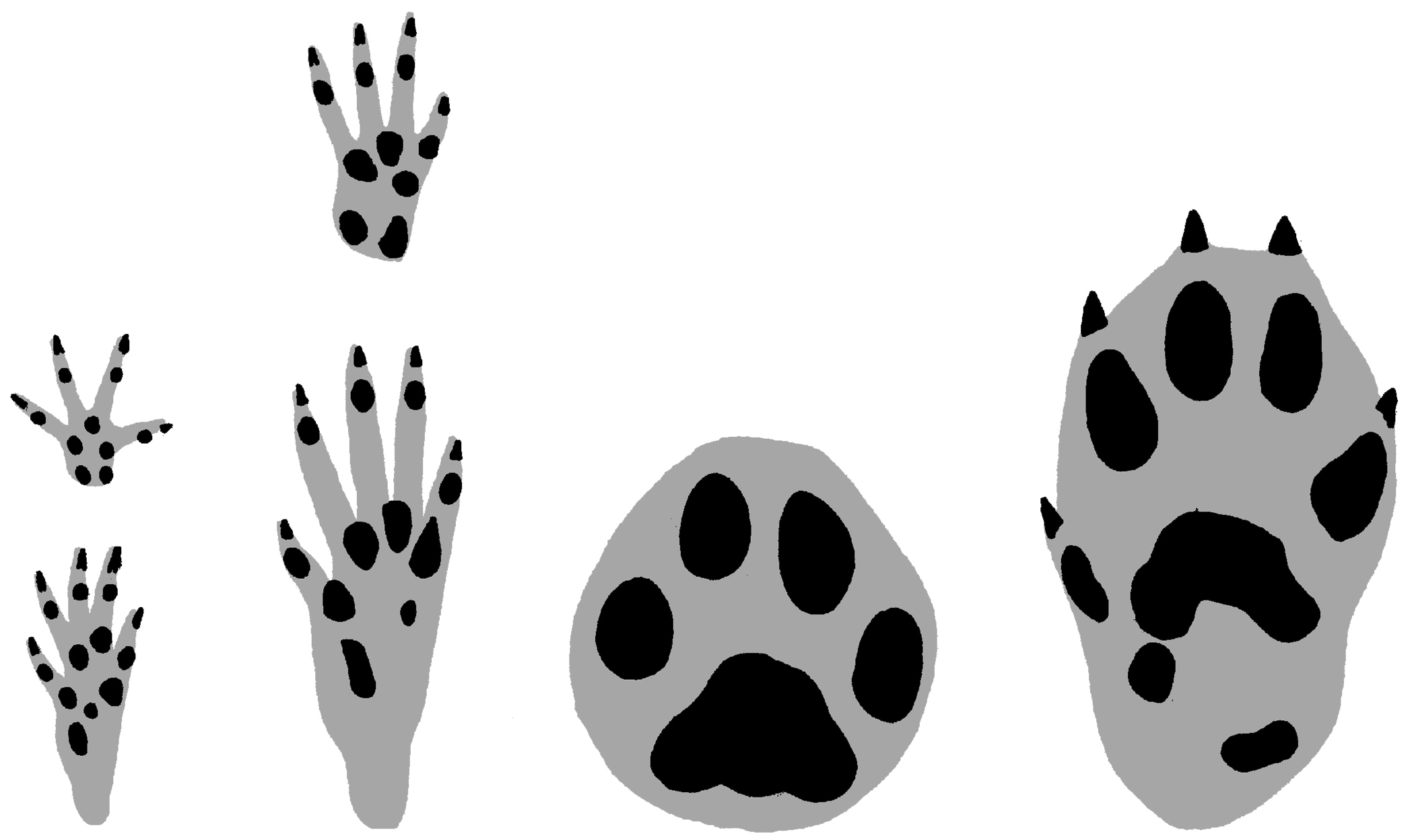The tracing of footprints is primarily an outdoor pursuit, but even indoors it is• occasionally possible to learn something from the track left by some unknown animal.
In mills and other establishments where there is always a certain amount of dust lying around tracks will often provide evidence of the presence of pests even though it may not always be possible to identify them with any degree of accuracy. Insect tracks are a difficult problem, mainly because an insect has six legs and there is really no chance of identifying one from its tracks alone. The most that could be deduced would be an idea of its size, and whether it left distinct tracks as it ran around or merely a few signs of creeping such as would be left by a larva.
Mice and rats have four well-developed toes on each forefoot, while the considerably larger hind-feet have five toes. It is not possible to differentiate the various mouse species from their tracks, but mice and rats can be distinguished by their size. Beech marten tracks are oblong, and nearly always show the imprint of the claws. They can be easily distinguished from the round tracks of a domestic cat, which is the only largish mammal with which they are likely to be confused. See p. 188 for further information on beech martens.





